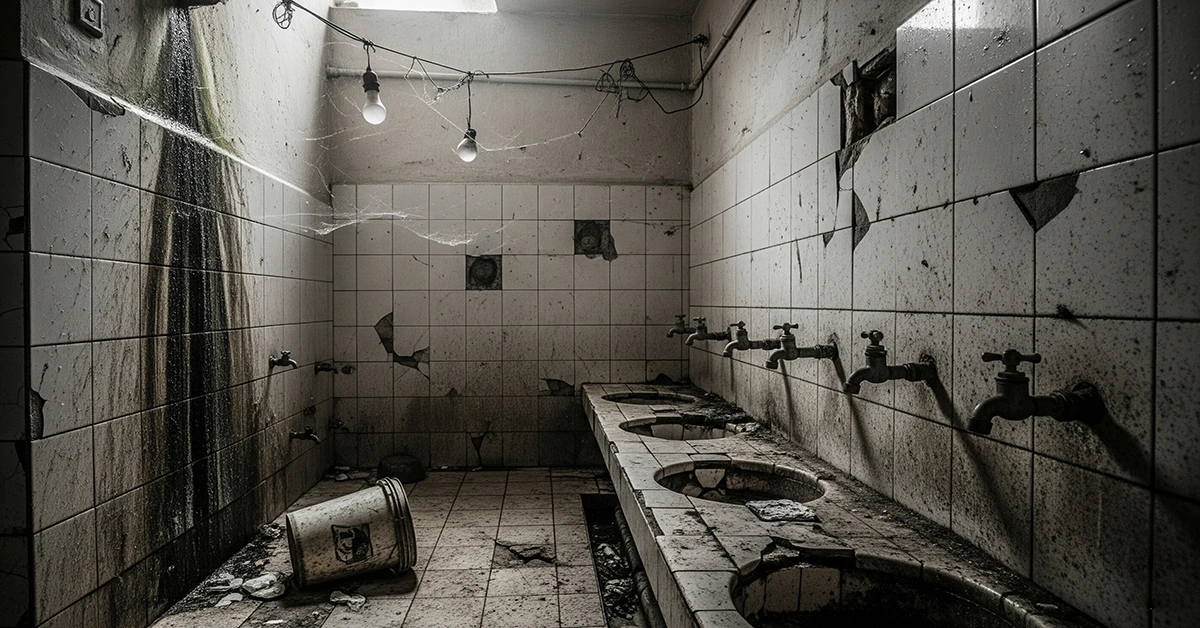
Sanitation is not just about hygiene; it’s about dignity. But in India, toilets—especially public ones—are treated less as a basic right and more as a nuisance best ignored. Most government offices boast walls painted with slogans about “Clean India,” yet the same corridors lead you to washrooms and restrooms that look like archaeological ruins from some forgotten civilisation. Is this incompetence? Carelessness? Or is it a cultural blind spot where we simply do not associate cleanliness with self-respect?
If you ever want to understand India’s cultural identity, skip the glossy brochures, the grand temples, the IT parks with glass facades, or the “world-class” metro stations. Instead, take a quick detour to the nearest government office washroom. One sniff, one glance, and you’ll know exactly why India—despite its billion-plus brains, billion-dollar startups, and bullet train dreams—still drags its feet behind the West.
Because nothing screams “superpower in the making” like a toilet without water, broken latches, and a stench that can assassinate your nostrils.
The Ugly Truth Hidden In Cubicles
Sanitation is not just about hygiene; it’s about dignity. But in India, toilets—especially public ones—are treated less as a basic right and more as a nuisance best ignored.
Most government offices boast walls painted with slogans about “Clean India,” yet the same corridors lead you to washrooms and restrooms that look like archaeological ruins from some forgotten civilisation.
Is this incompetence? Carelessness? Or is it a cultural blind spot where we simply do not associate cleanliness with self-respect?
The Great Indian Hypocrisy
Let’s not kid ourselves. Indians are obsessed with personal cleanliness—bathing daily, oiling hair, washing feet before stepping indoors. But when it comes to collective spaces, especially public toilets, it’s as if we collectively decide: “Not my problem.” The paradox is glaring: sparkling homes but revolting public washrooms.
This is not just about toilets. It’s about a national attitude where “private neatness” thrives while “public responsibility” rots. And that reflects a troubled cultural identity.
Why The West Flushes Ahead
Walk into a public washroom in Europe or the US, and you may find graffiti, maybe even a broken hand dryer—but you won’t find toilets that look like crime scenes.
Why? Because there’s a cultural expectation that public hygiene is non-negotiable. It’s built into their civic DNA. In India, meanwhile, we’ve normalised filth. Children grow up thinking stinky public toilets are “just how it is.”
And yet, we dream of becoming a global leader. Perhaps we should first master the art of flushing properly.
The Dangerous Consequence
This neglect is not merely embarrassing—it’s dangerous. Lack of sanitation spreads disease, lowers productivity, and deepens inequality (especially for women who often avoid public spaces due to unhygienic toilets). More importantly, it symbolises a nation comfortable with mediocrity.
If we cannot keep our toilets clean, how do we expect to run clean governments, clean economies, or clean systems?
The Final Flush
India’s “toilet problem” is not about infrastructure alone—it’s about mentality. Until we stop treating public hygiene as someone else’s job, no amount of “Smart Cities” branding will hide the stench of our cultural complacency.
So the next time you hear someone proudly say “India is the next superpower,” ask them this: “Really? Have you been to the washroom at the local government office?”
Because a civilisation that cannot manage its toilets will always struggle to manage its future.
ALSO READ | Building On Sand: Why India’s Idea of ‘Development’ Keeps Collapsing In The Hills
Mahesh 'Karan' Prasad is an engineer by education and an aspiring musician by passion, who also has a knack of writing on music and movies. Having written around a 50 songs, Mahesh has composed and recorded around 10 songs. He wishes to create meaningful and soulful music.